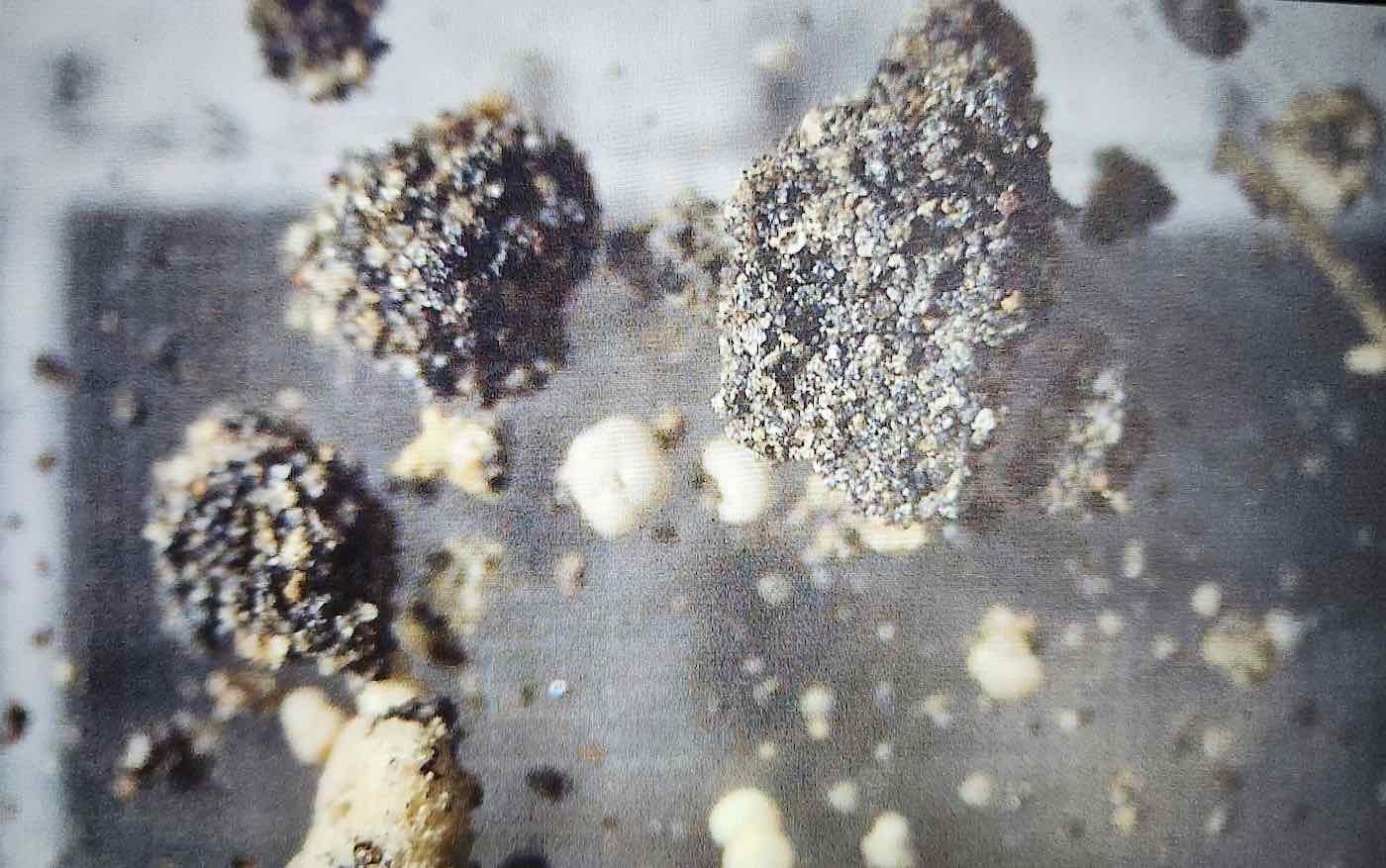These combined 14-17th installments in an ongoing series of updates from Harvard Astronomer Avi Loeb, head of The Galileo Project, document the team’s expedition to attempt the recovery of an interstellar object from the floor of the Pacific Ocean. This combined four-part entry covers Day 9 (June 19, 2023) and Day 10 (June 20, 2023) of the team’s expedition.
Diary of an Interstellar Voyage: Part 14 (June 19, 2023)
My daily jog at an average speed of 3 miles in 24 minutes did not bring me out of the boundary of the ship’s deck. The reason is simple: there is a vast ocean beyond that boundary. My cell phone app measured the effective distance that I would have traversed if I were set free on land. It occurred to me that irrespective of how much effort we put into our daily routines, we sometimes run in circles. The key is to open our minds to the broader horizon out there.
As the Sun was rising, I looked at the huge body of water surrounding the boat. This ocean has an all-encompassing reality here, with a nearly uniform appearance except for small ripples, much like the Universe at large. Yet, we tend to live our lives and focus all of our attention on the boat that carries us. In the cosmic case – the boat is our home planet, the Earth. Last night we asked the boat captain to turn off the deck’s lights so that we could see better the Milky Way stars overhead. The majestic view left me in awe. I could not avoid wondering: what if there is a different world out there, hidden from our limited view, like life in the depths of the ocean?
In the latest video footage taken by our underwater sled, I noticed shrimp and fish swimming in front of the sled at a depth of 2 kilometers underneath our boat, Silver Star. To see them, we had to send a camera to a great distance. Similarly, to find intelligent partners in our cosmic neighborhood, we have to work hard in seeking the evidence as a substitute for the lazy mantra “Where is everybody? … extraordinary claims require extraordinary evidence…”.
While surveying the floor of the Pacific Ocean for 12 hours, our latest Run 6 saturated the sled magnets by scooping material from the likely crash path of the first recognized interstellar meteor, IM1. By now, our expedition team members Rob Millsap and Art Wright mastered the technique of keeping the sled on the ocean floor, while Jeff Wynn and Ryan Weed mastered the technique of characterizing the composition of our harvested materials.
As I approached the sled, I noticed a rock stuck in between two lead weights. Jeff Wynn conjectured that it might be coral or a natural product of a nearby volcano. Indeed, the video footage from the sled cameras showed a debris field full of volcanic rocks.
Examination of some fragments by our electronic microscopes showed small particles of either biological or geological origin.
The only anomaly in Run 6 was a collection of pieces of corroded iron, which I quickly dried up with a hairdryer and handed over to Ryan Weed for composition analysis.
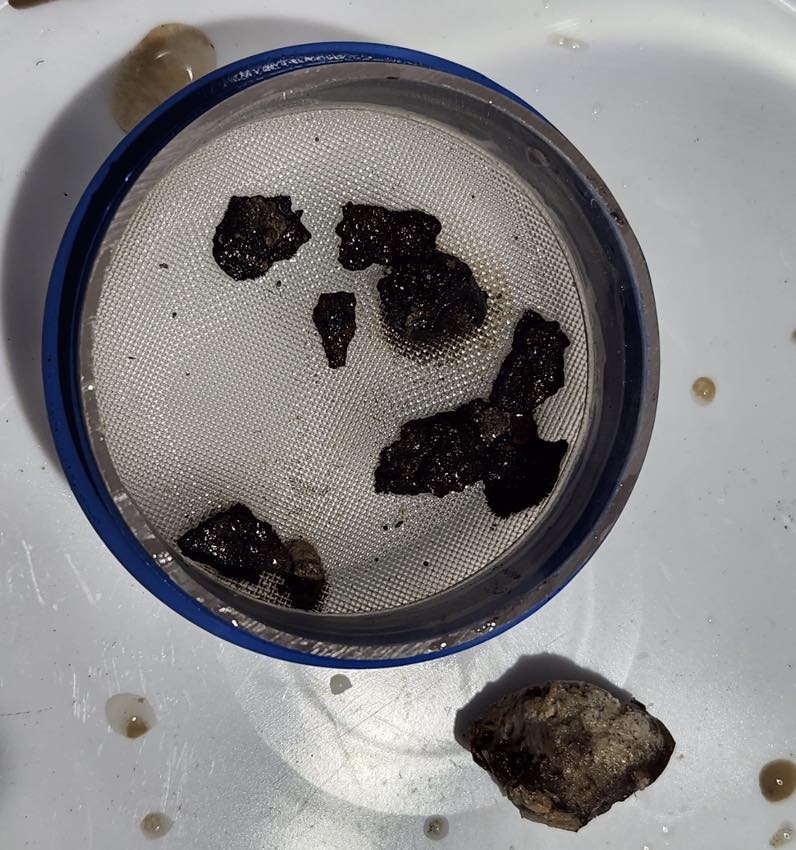

With enough material, our gamma-ray spectrometer could infer whether the volcanic ash or the corroded iron pieces were produced before or after August 1945, based on whether they carry radioactive isotopes that contaminated Earth after atomic bombs were dropped on Hiroshima and Nagasaki.
Upon launching Run 7, the winch cable jumped the pulley and shifted between the pulley frame and the pulley disk at a height of 7 meters on a heaving deck with a thunderstorm on the horizon. The UK-based oceanographer Toby Adamson, who sleeps on the bed below mine in our shared bunk, spliced the cable in record time with a splice that is 95% as efficient as the original tensile strength. This startling experience after midnight brought Rob Millsap out of bed after a sleepless day and convinced me beyond any doubt that we have an exceptional A-team of professionals on Silver Star.
Around the time that we started examining the harvest from Run 6, I received an email that my paper with Professor Thiem Hoang, about `Oumuamua not being a water iceberg – as suggested recently, has been accepted for publication after peer review in the prestigious scientific outlet, The Astrophysical Journal Letters. I decided to write to some science journalists in major newspapers who concluded several months ago that `Oumuamua’s nature has been resolved as being a natural object.
After sending the emails, it occurred to me that we will keep running and thinking our operation on the deck of Silver Star, irrespective of what these science reporters and their followers do.
Diary of an Interstellar Voyage: Part 15 (June 19, 2023)
On Run 6 of the magnetic sled through the likely crash site of the first recognized interstellar meteor, IM1, the expedition research team recovered shards of corroded iron. At first, we thought it may be common industrial iron associated with human-made ocean trash. But when Ryan Weed ran the sample of shards through the X-ray Fluorescence (XRF) analyzer, the most likely alloy it flagged is X5 steel with titanium, which is also known as shock-resisting steel.
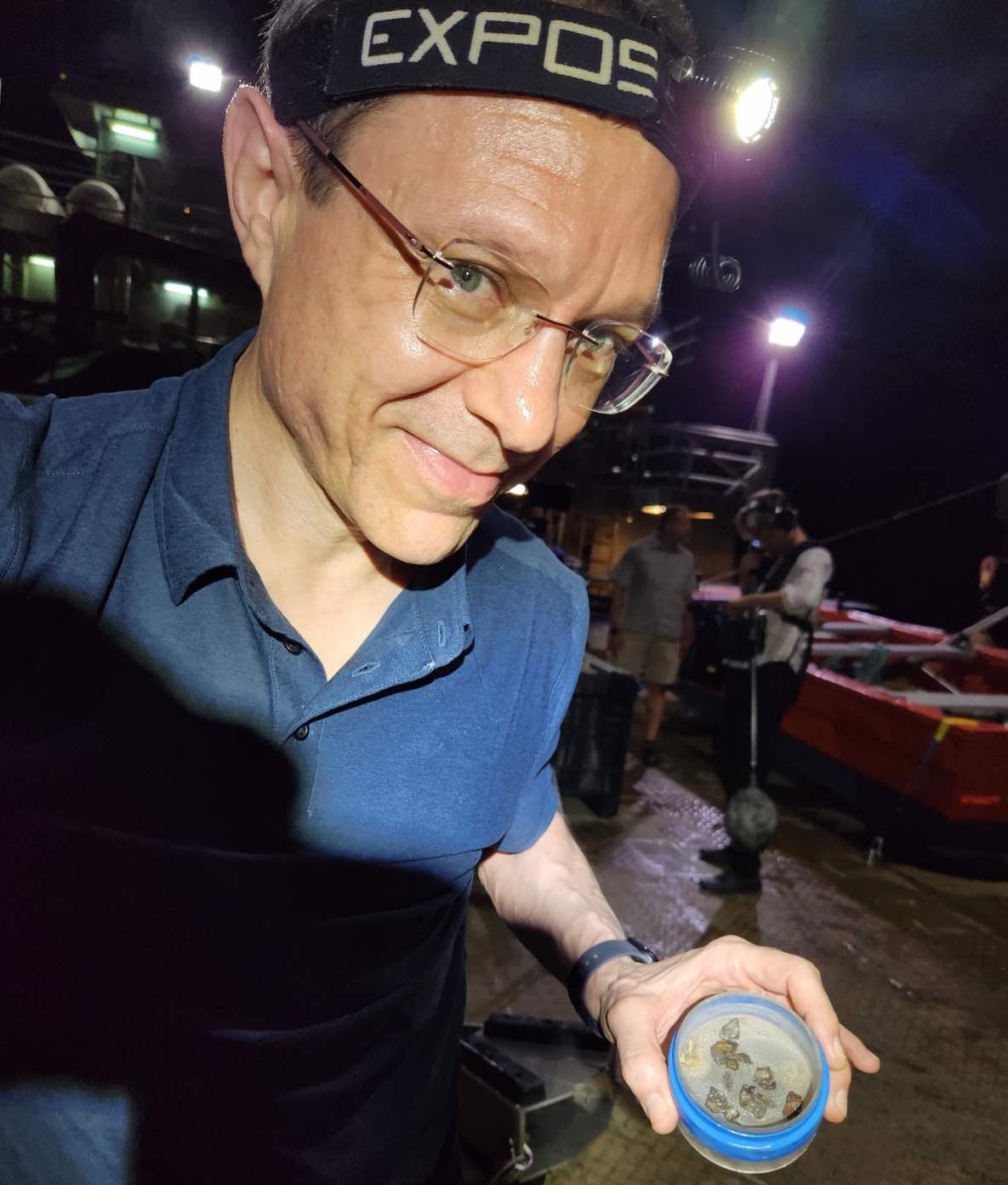

The yield strength of S5 steel, 1.7 GPa, is well above that of iron meteorites. This is consistent with the fact that IM1 was tougher in material strength than all other 272 meteors in the CNEOS catalog of NASA.
Most importantly, the shape of the recovered shards is nearly flat – as if they were surface layers broken off ba technological object which experienced extreme material stress. Iron meteorites break into small pieces which are melted by the fireball into spherules that rain down and are recovered in strewn fields as nearly spherical fragments.
It is possible that the fireball of IM1 resulted from the breakup of surface layers and the core of the object survived entry through the atmosphere, as expected for spacecraft. As it turns out, the magnetic sled bumped into a solid object in Run 6, but this encounter was not captured by the sled’s camera because it ran out of batteries.
Today, Run 7 recovered additional iron shards along a path separated from Run 6 by a few kilometers. This indicates that the shards are not associated with a single wreck site but rather constitute a wide debris field, consistent with an IM1 origin.
We noticed two types of shards, that we label `red’ and `gray’ based on their color – which in turn reflects different oxide states. Preliminary XRF analysis implies that the gray-type resembles S5 steel with 93% iron and 0.8% titanium by mass whereas the red-type is 99.3% iron and 0.1% titanium. The red-type shards are labeled by the XRF as close to 1100 Series Carbon-Steel with a yield strength of about 200 MPa, surprisingly close to the ram pressure at which IM1 disintegrated.
Does this coincidence mean that we have recovered fragments from IM1? And if so, why would an interstellar object be made of steel unless it was manufactured technologically? The technological origin would be consistent with the flat shape of the recovered shards in Runs 6 and 7 on June 18-19, 2023. The speed of IM1 outside the solar system was higher than any human-made spacecraft so far.
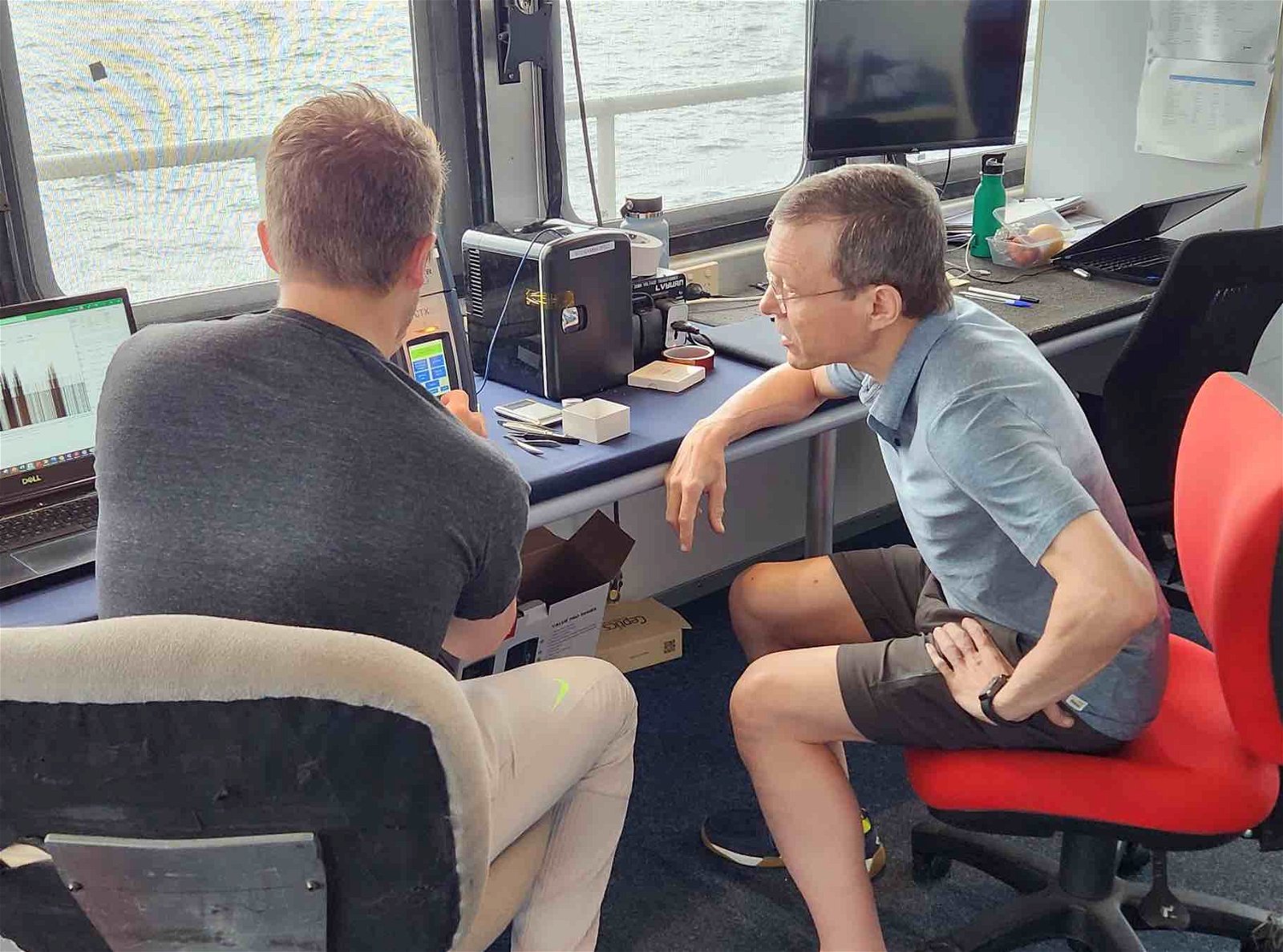

We are currently studying the gray-type shards with our gamma-ray spectrometer. A lack of short-lived radioactive isotopes, like Aluminum-26, could be used to infer an extraterrestrial origin of these shards if they spent much more time than the half-life of these isotopes in interstellar space. Given the known speed of IM1 outside the solar system, its travel time through the Milky Way galaxy was likely many millions or perhaps billions of years – leaving no trace of short-lived isotopes. In contrast, any trash thrown into the ocean should have the well-known abundance of rare radioactive isotopes on Earth.
The sled was launched into Run 8 this afternoon. In the coming days, we will know more. It is possible that we will conclude that the shards are all human-made based on the results from the gamma-ray spectrometer and further analysis of the XRF data. As Richard Feynman noted, the pleasure of doing science is in finding things out.
Diary of an Interstellar Voyage: Part 16 (June 20, 2023)
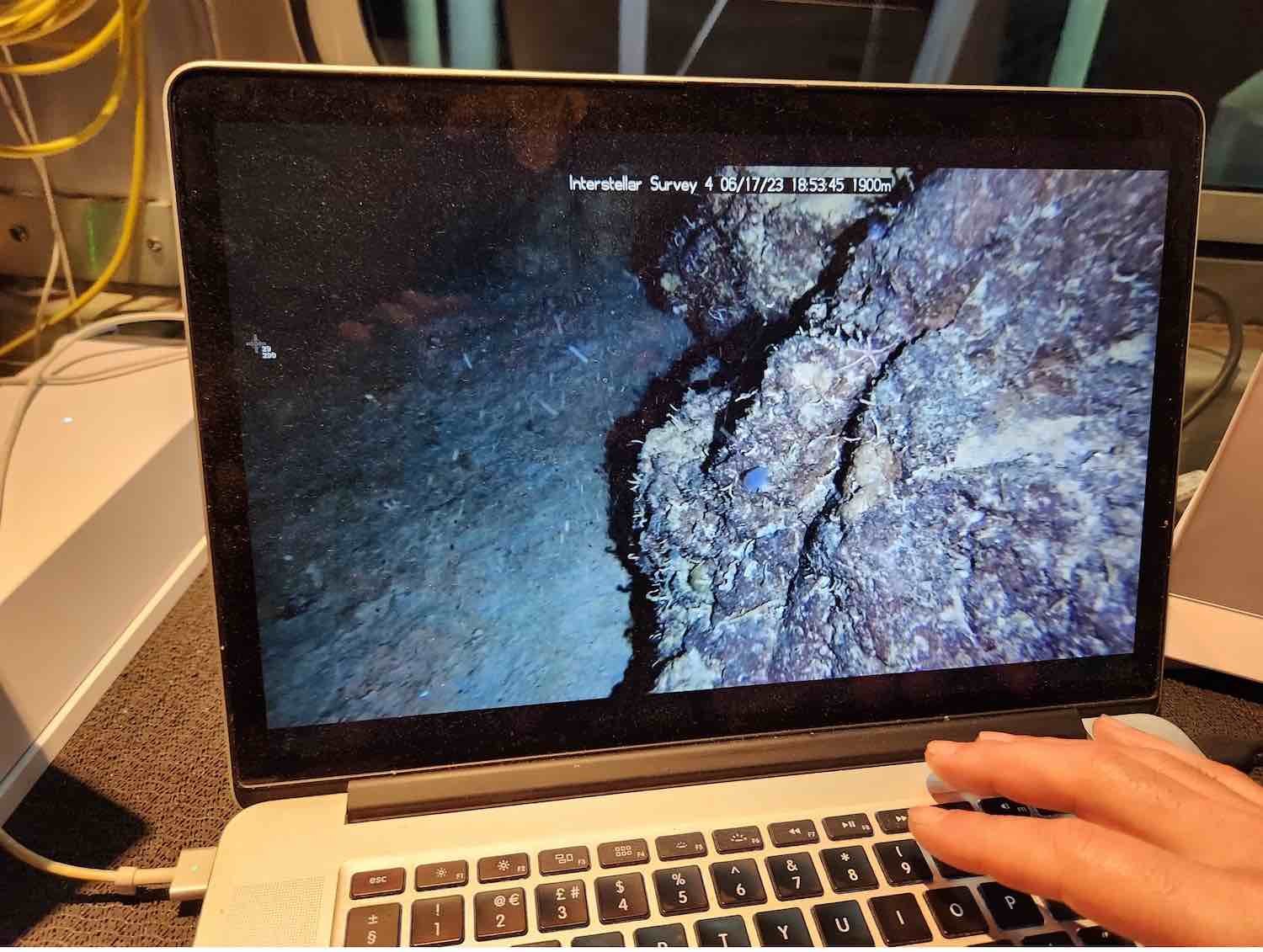

As I was jogging on the deck of Silver Star, the workout app on my electronic watch indicated a frustratingly slow paste of motion compared to the one that I am used to. By the end of the run I realized that I must have been facing the opposite direction relative to the motion of the ship. The motion of the platform under my feet might have slowed down my inferred speed relative to the Earth’s frame of reference as calibrated by GPS satellites. The lesson to be learned from this experience is that everything is relative. As Oscar Wilde noted: “The only people who appear normal to me are those who I do not know very well.”
Similarly, the definition of an anomaly in physics relies on a good understanding of the background. This applies to the direct search for dark matter particles in laboratory detectors, as well as to Galileo Project expeditions in search of technological relics from extraterrestrial civilizations.
Run 8 of the magnetic sled through the likely crash site of the first recognized interstellar meteor, IM1, about 84 kilometers off the coast of Manus Island in Papua New Guinea, yielded a large harvest of volcanic black powder, which we plan to run through our gamma-ray spectrometer in the coming days in order to characterize its radioactive constituents.
This black powder is dominated by a large background of volcanic ash but may contain dust from the exterior of IM1. The video footage from the sled’s camera showed clear evidence for volcanic rocks as well as hydrothermal vents that were the source of life on Earth. Despite the darkness of the ocean floor at a depth of 2 kilometers, the “nightlife” appears to be thriving there as much as in Las Vegas.
The producer of the expedition’s documentary, Dan Levine, who also produced my favorite science-fiction film Arrival, emailed me to say, “I wonder as you are gazing up at the Milky Way, who is gazing back at you…”, to which I replied, “Any documentaries they are making might not be as good as yours. Your film has a good chance of winning the Galactic competition.”
We realize that IM1’s debris had rested on the ocean floor for nearly a decade and could have been coated by biological or geological processes. For example, we suspect that the silica detected on the surface of the steel shards we recovered from IM1’s debris field was probably background contamination. To remove it, we polished one of the gray shards from Runs 6 & 7 and noticed a significant reduction in its silicon content, making a high-confidence identification of its composition as similar to Series 1100 Low Alloy Steel with a material yield strength in a range above 165 MPa, surprisingly close to the ram-pressure at which IM1 disintegrated.
Once we are able to trace IM1’s path based on criss-crossing its debris field, we could potentially search for evidence of any large body at the end of IM1’s path as it impacted the ocean floor. If IM1 was of technological origin, we can then study the technologies embedded in its relic.


We plan to store all the retrieved materials at the Harvard College Observatory upon our return, and then analyze them with the most sensitive instruments available worldwide. This would allow us to reach detection sensitivities for radioactive isotopes that are a hundred times better than that attainable on Silver Star. The improvement in the signal-to-noise ratio of the gamma-ray spectral lines from our sample improves in proportion to the square root of integration time, so there is little benefit from integrating each measurement on the ship for more than a single day.
We already know that the Uranium content of our steel shards is not orders of magnitude larger than expected on Earth, but we cannot reach the sensitivity needed to assess if some of it was depleted during an interstellar journey. With our laboratory tools back home, we will be able to conclude with confidence whether the sample of steel shards is of terrestrial or interstellar origin, irrespective of the details associated with human-made trash in the Pacific Ocean near Papua New Guinea. The beauty of science is that it can dissociate its conclusions from details associated with the behavior of humans. I told the documentary director, Jason Kohn, that I hate crowds of people because by listening to all they say – I end up wasting most of my time on noise rather than on signal.
Here’s hoping for a large extraterrestrial signal relative to our terrestrial noise on the ocean floor at IM1’s crash site.
Diary of an Interstellar Voyage: Part 17 (June 20, 2023)
Any qualified detective knows when the time comes to pause, summarize the evidence and choose the best path for resolving the mystery. This approach enhances the efficiency of the search for answers, which otherwise requires much more time and resources. Since our time and resources on Silver Star are limited, I reevaluated where we should go next based on our experience and asked Art Wright to follow this path.
The Department of Defense (DoD) reported the location of the first recognized interstellar meteor, IM1, to within one significant digit after the decimal point in longitude and latitude. We, therefore, considered the localization uncertainty to be 0.1 degrees and used additional seismometer data to reduce the localization uncertainty.
However, it occurred to me today that out of the 9 lines we surveyed so far in the lower half of the DoD box, the most successful one in collecting anomalous steel shards was Run 6, which passed through the middle of the error box. It is, therefore, possible that the fireball occurred exactly at the center of the DoD box. I, therefore, suggested that Run 10 will pass through this center. Finding a concentration of shards at the box center would strengthen the case that the shards may be related to IM1 since it is unlikely that an unrelated process would concentrate them there.
The different lines surveyed by the expedition’s sled within the DoD box. Line 6 provided the largest crop of steel shards and passed through the box center. The orange region is the path favored by seismometer data.
Retrieval of the magnetic sled in Run 9. The materials retrieved by Runs 8 & 9 in the lower part of the DoD box did not deliver any steel shards.
The fireballs of solar system meteors often produce magnetic spherules of melted droplets that are shaped by surface tension and friction with the air. Where are IM1’s spherules?


A careful inspection of the particles in our samples showed a special class of nearly-spherical magnetic particles. However, imaging through our electronic microscopes revealed that they are biological in origin. Jeff Wynn, who imaged them, informed me that they are likely plankton encrusted with magnetite. He asked whether I am interested in biology. I told him that I am interested in biology but not from planet Earth.
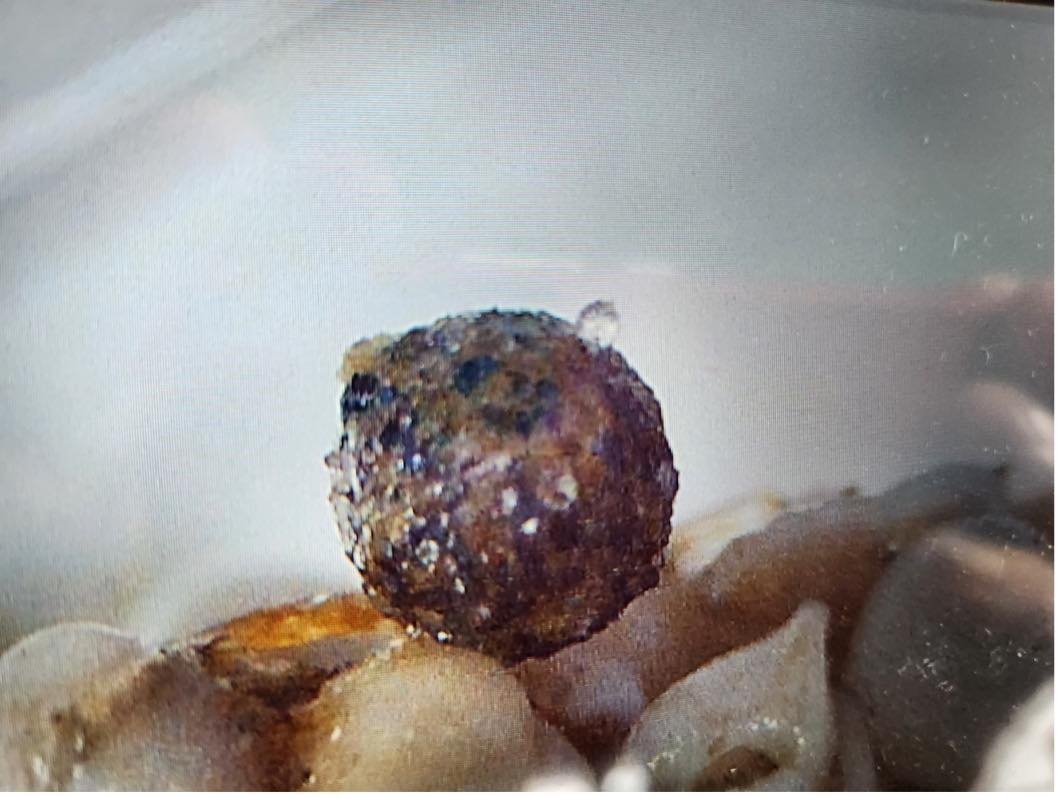

So far, we had not retrieved any spherules from IM1. This may either imply that they were rare, and non-magnetic, or that we visited the wrong location.
Later this week, we are planning to use a sluicing device to separate non-magnetic particles based on their high density. If our sluicing device would retrieve any gold from sunken ships, we will throw it back into the ocean. After all, our treasure is valued in interstellar currency.
Avi Loeb is the head of the Galileo Project, founding director of Harvard University’s – Black Hole Initiative, director of the Institute for Theory and Computation at the Harvard-Smithsonian Center for Astrophysics, and the former chair of the astronomy department at Harvard University (2011-2020). He chairs the advisory board for the Breakthrough Starshot project, and is a former member of the President’s Council of Advisors on Science and Technology and a former chair of the Board on Physics and Astronomy of the National Academies. He is the bestselling author of “Extraterrestrial: The First Sign of Intelligent Life Beyond Earth” and a co-author of the textbook “Life in the Cosmos”, both published in 2021. His new book, titled “Interstellar,” is scheduled for publication in August 2023.
